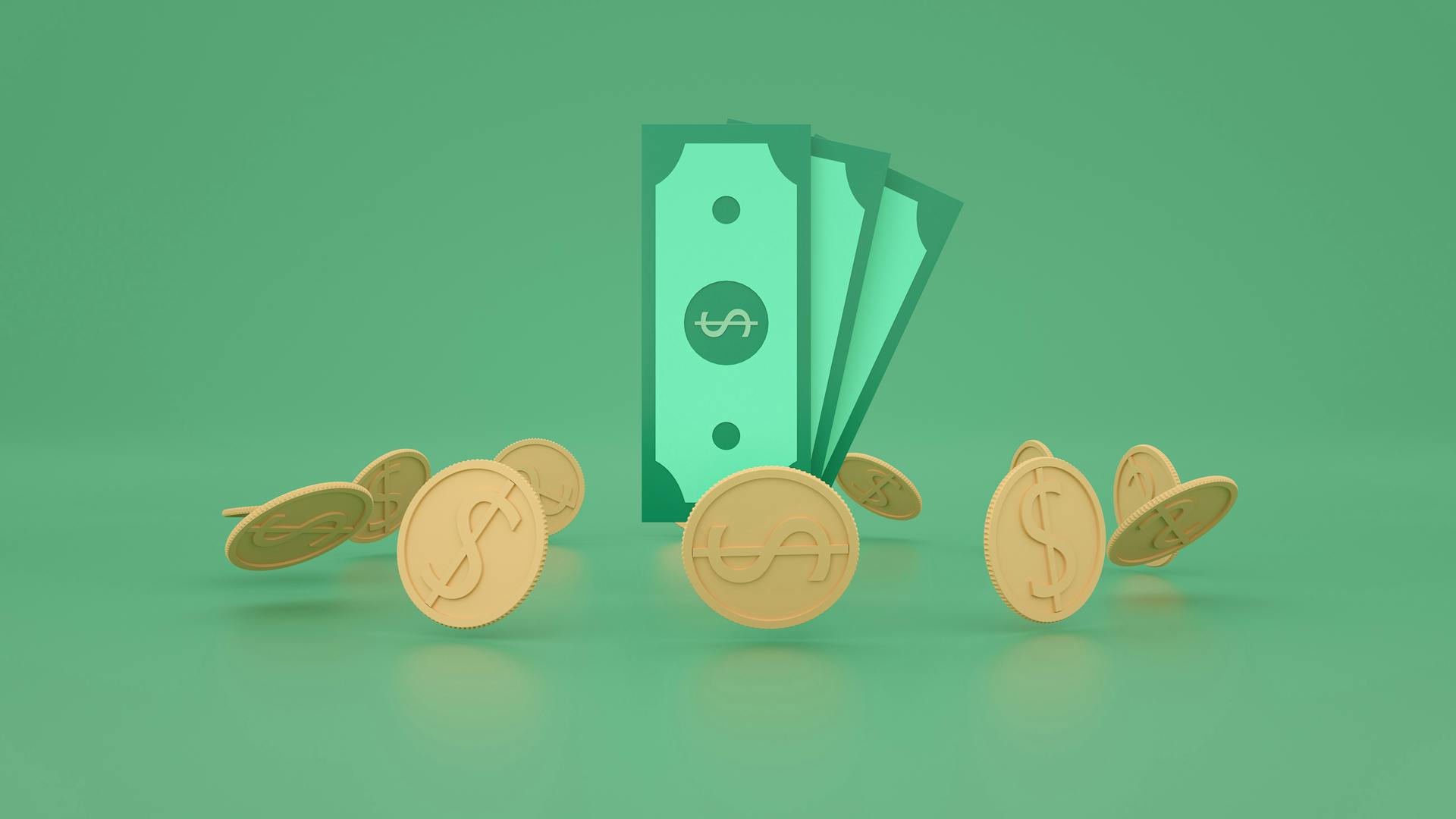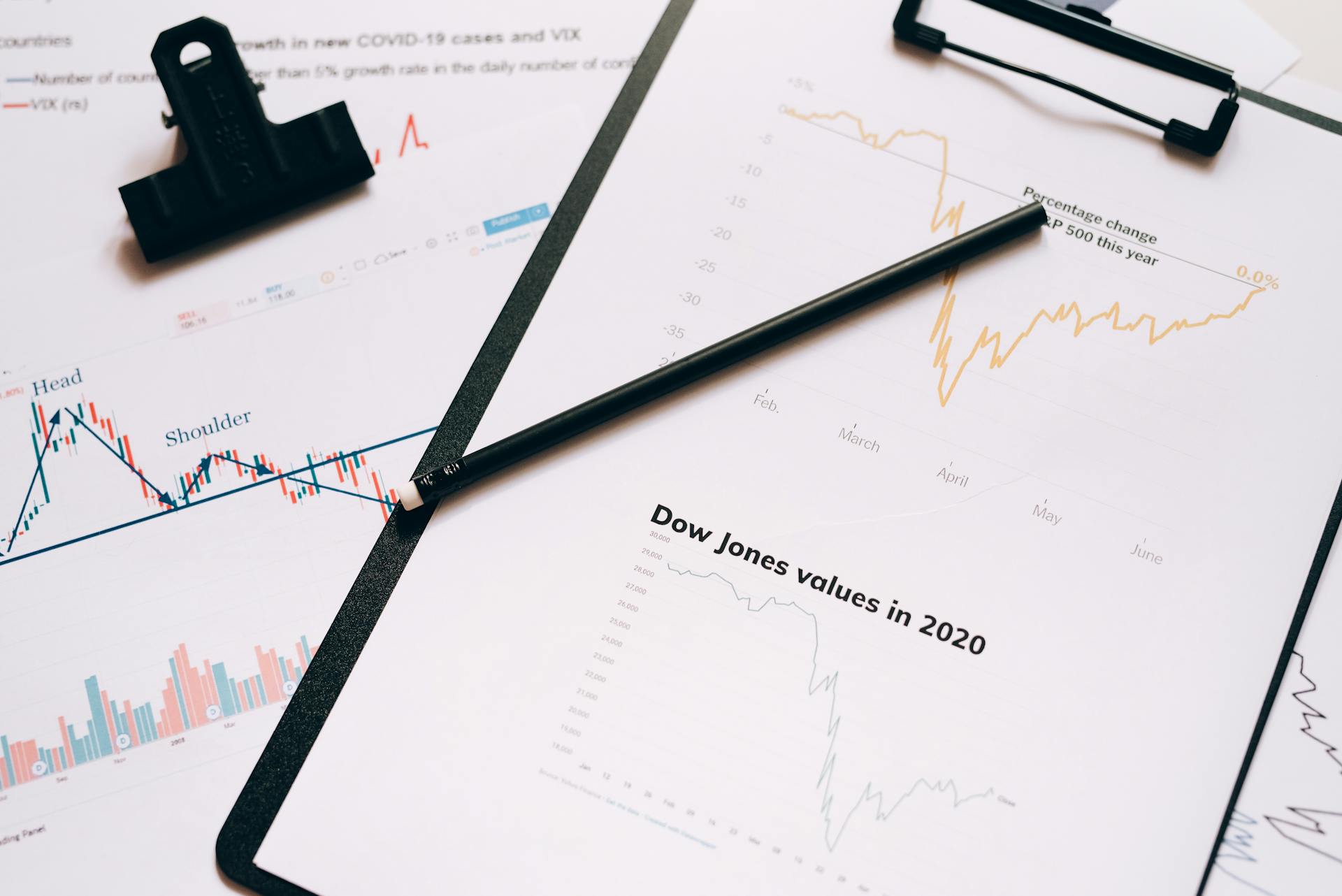
Green trade finance is a game-changer for the environment. By providing financing for sustainable trade, it helps reduce carbon emissions and promotes eco-friendly practices.
The International Chamber of Commerce estimates that green trade finance could support up to 30% of global trade by 2025.
Green bonds, a type of green trade finance, have seen significant growth in recent years. In 2020, green bond issuances reached a record high of $270 billion.
This surge in green bond issuances is a testament to the increasing demand for sustainable financing options.
See what others are reading: Sustainable Finance
What Is Green Trade Finance?
Green trade finance is a concept that aims to blend rigor with pragmatism, presenting a clear road for financial institutions to engage in the green economy.
It's designed to appreciate the complexity of trade operations, which is crucial for sustainable commerce to flourish. The goal is to coordinate the trade finance sector with world climate targets, promoting a more sustainable global economy.
Green trade finance is a component of a larger initiative to ensure trade finance develops in line with the expectations of a society more and more environmentally conscious.
Why Use Green Trade Finance?
Using green trade finance can help you create a positive reputation and differentiate your brand from the competition, giving you an edge with customers and prospects.
By integrating sustainability into your business strategy, you can facilitate long-term growth and stay ahead of the curve.
Funding eligible green projects can significantly reduce the climate impact of your company's operational activities.
Building a strong profile in the green finance market can make your company more attractive to investors, opening up new opportunities.
Green trade finance enables you to invest in renewable energies, research and development activities, and efficiency improvements, which can lead to new revenue streams and cost savings.
Eligible Projects and Scenarios
Eligible projects for green trade finance include eco-efficient and circular economy adapted products, production technologies, and processes. These can help reduce waste and promote sustainable practices.
Waste prevention, reduction, recycling, and waste-to-energy projects are also eligible, as are products made from waste. This can help reduce the environmental impact of production and promote a more circular economy.
Sustainable animal husbandry and climate-smart farm inputs, such as crop protection, are also eligible projects. These can help reduce the environmental impact of agriculture and promote more sustainable farming practices.
Here are some indicative examples of eligible projects:
- Eco-efficient manufacturing processes
- Waste reduction and recycling facilities
- Sustainable agriculture practices
- Renewable energy solutions
Applicable scenarios for green trade finance include sourcing eco-friendly raw materials, procuring eco-friendly machinery and services, and manufacturing eco-friendly products. Trading eco-friendly commodities and providing services to support green projects are also eligible scenarios.
Risk mitigation through traditional trade solutions is also an applicable scenario. This can help reduce the risks associated with green trade finance and make it more accessible to businesses.
Here are some indicative examples of applicable scenarios:
- Sourcing sustainable raw materials
- Procuring eco-friendly machinery
- Manufacturing green products
- Trading sustainable commodities
- Providing services for green projects
Receivables from sales of eco-friendly products or services, and receivables from products or services delivered to support green projects, are also eligible for green trade finance.
Sustainability-Linked Finance
Sustainability-Linked Finance is a game-changer for businesses looking to reduce their environmental footprint.
DBS offers a range of green guarantee products that can be used to bid for renewable energy projects, providing a risk-free way to invest in sustainable initiatives.
These products are backed by DBS' excellent credit rating, which provides an added layer of security for beneficiaries and helps to improve partnerships between applicants and beneficiaries.
By using DBS' sustainability-linked finance options, companies can get financing for their trade transactions and projects that comply with internationally recognised ESG standards.
This means that businesses can focus on achieving their sustainability performance targets while also accessing the financing they need to grow and thrive.
DBS' green guarantee products can be used to mitigate payment risk and support the performance of underlying projects or transactions that have a positive contribution to ESG goals.
Frequently Asked Questions
What is an example of a green trade?
An example of a green trade is the export of solar panels, which contribute to environmental protection and climate goals. This type of trade helps reduce our reliance on fossil fuels and promotes sustainable energy solutions.
Sources
- https://www.business.hsbc.com.mt/en-gb/solutions/green-trade-finance
- https://www.linkedin.com/pulse/guiding-sustainability-trade-finance-comprehensive-icc-frosinini-becvf
- https://www.dbs.com.sg/corporate/sustainability/green-and-sustainable-trade-financing
- https://tfp-ebrd.com/about/
- https://www.adb.org/news/adb-bii-launch-new-green-trade-finance-partnership-asia-and-pacific
Featured Images: pexels.com


